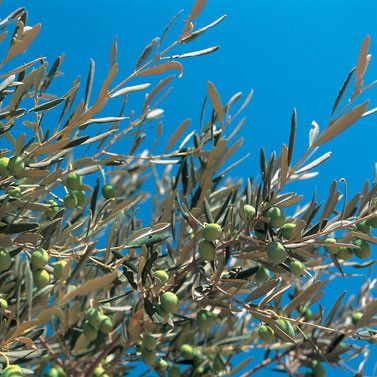- Villa search

- Canaries
- Caribbean
- Croatia, Bulgaria and Hungary
- Cyprus
- Florida
- France and Corsica
- Greece
- Italy
- Lakes and Mountains
- Madeira
- Malta and Gozo
- Portugal
- South Africa
- Spain - Balearics

Market meals
Tapenade
This ‘caviar’ of Provence is either green or black, depending on the olives used. Traditionally, it’s a mixture of olives, capers, anchovies, olive oil and herbs, although you may encounter versions where sun-dried or fresh tomatoes, mozzarella, tuna or sardines have been added. Serve on croûtons (toasted rounds of baguette) with chilled wine as an appetiser, as a dip with crisp, small raw vegetables, or mashed with the yolks of hard-boiled eggs. It’s also useful as a sauce with fish like red mullet.Aïoli
A pungent garlic mayonnaise. This is the centrepiece of le Grand Aïoli – a leisurely one-course meal of baby raw vegetables (green beans, carrots, cauliflowers, radishes, artichokes etc), and cooked dried salt cod, chicken, and snails dipped into the aïoli. It’s traditionally served in restaurants on a Friday lunchtime and makes a convivial, lingering, meal.Pistou
The French version of Italian pesto, but without the pine nuts. A vibrant green mixture of basil, garlic and olive oil. Serve as a dip, add to soups, dress pasta with it or brush on grilled sardines.Anchoiade
An anchovy and garlic purée. Serve on toast as an appetiser. Or arrange as a trio with aïoli and tapenade and use as a dip for slices of fresh vegetables – radishes, small tomatoes, celery, peppers, carrots and mushrooms.Rouille
A spicy red mayonnaise made with saffron and cayenne or chilli pepper. Buy a jar of soupe de poissons (fish soup), top with croûtons spread with rouille, and sprinkle with grated cheese (usually gruyere).Olives
The symbol of Provence. Found on everything from tablecloths, to tea towels and pottery. Picoline is a popular olive (small, green and pointed), sold pickled in brine flavoured with herbs and orange peel. For a change, warm black olives in olive oil, add chopped herbs (sage or thyme), some strips of chilli pepper, season and serve warm with a glass of cold rosé.Olive Oil
Provençal cooking is unimaginable without liberal doses of olive oil. The green-gold oil of Nyon made with tanche olives, has a mild, fruity, flavour and has been awarded an AOC Appéllation d’Origine Contrôlée), as has that from Mausanne and Les Baux-de-Provence, which produce an intensely fruity and nutty deep green oil.Almonds
Combine olive oil, fresh thyme leaves and coarse salt in a bowl. Add almonds and toss, until well coated. Put on a baking tray and bake for four minutes in the oven until lightly browned. Serve warm with an aperitif.Goat’s Cheese
Provençal cheeses are mainly chèvre, made from ewe’s and goat’s milk. Young soft cheeses are often served sprinkled with olive oil and fresh herbs or cracked black pepper or, for a sweeter taste, honey and pine nuts. Look out for Picadon, Brousse (a cottage cheese, often mixed with herbs), Annot, Bairols and Banon, wrapped in chestnut leaves.Eat raw, or drizzle with olive oil, grill and serve warm with salad. Spread on toasted rounds of a baguette and grill until browned and bubbling. Cut a soft, fresh goat’s cheese in half, spread the bottom half with tapenade, then replace the top.
Mesclum
A loose mix of baby green salad leaves – red and green oak leaf lettuce, mâche (lambs’ lettuce), crinkly frisée, dandelion leaves and maybe nasturtium flowers.Provençal honey
Flavoured with lavender, rosemary, chestnuts or mixed flowers. Use to glaze roast chicken or lamb.Herbes de Provence
The mixture always contains thyme, rosemary, marjoram or bay and summer savory. Sometimes other herbs like lavender, basil, sage, fennel or oregano are added. Use when grilling and roasting fish or lamb, or sprinkle on baked vegetables.Fougasse
This local bread has holes in it studded with olives, crispy pieces of ham, or anchovies.Cavaillon melons
Halve, fill with red berries, and spoon over Beaume de Venise, a sweet white wine.home | destinations and editorial | villa search | property for sale | car hire | flights | services
villaseek blog | contact villaseek | links and resources | advertise your villa© Dune Root Ltd and Villaseek.com 2012 - Caribbean
- Canaries